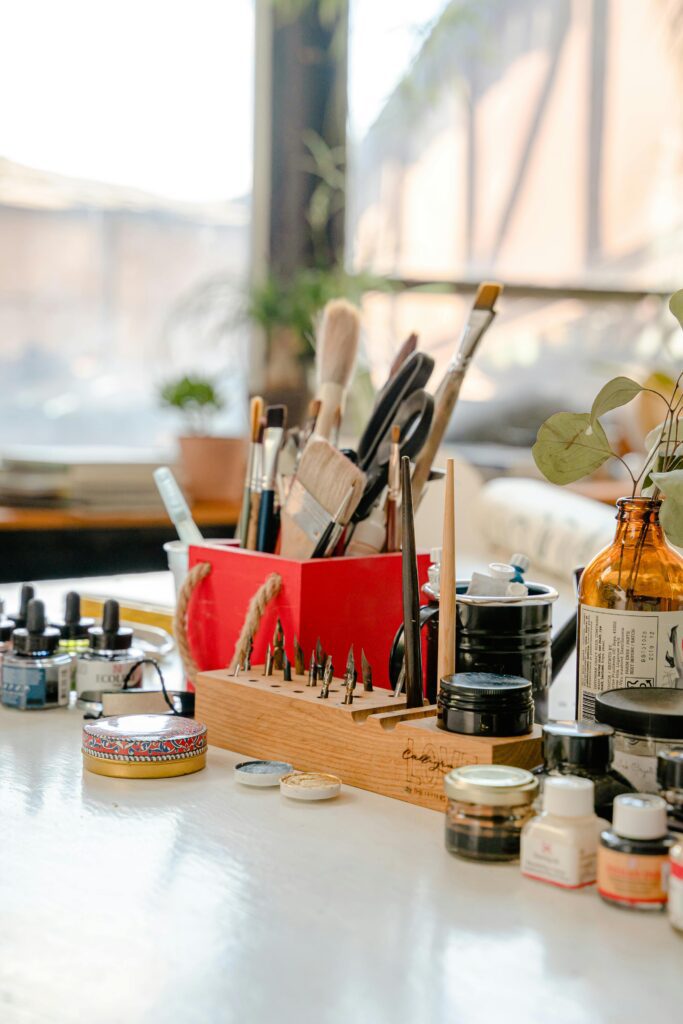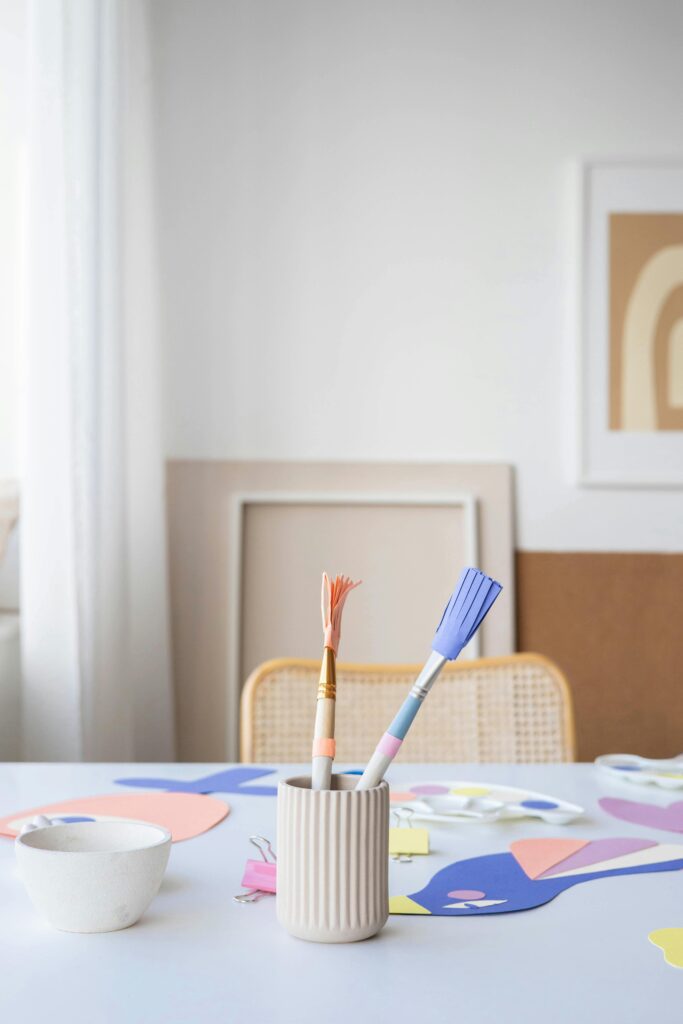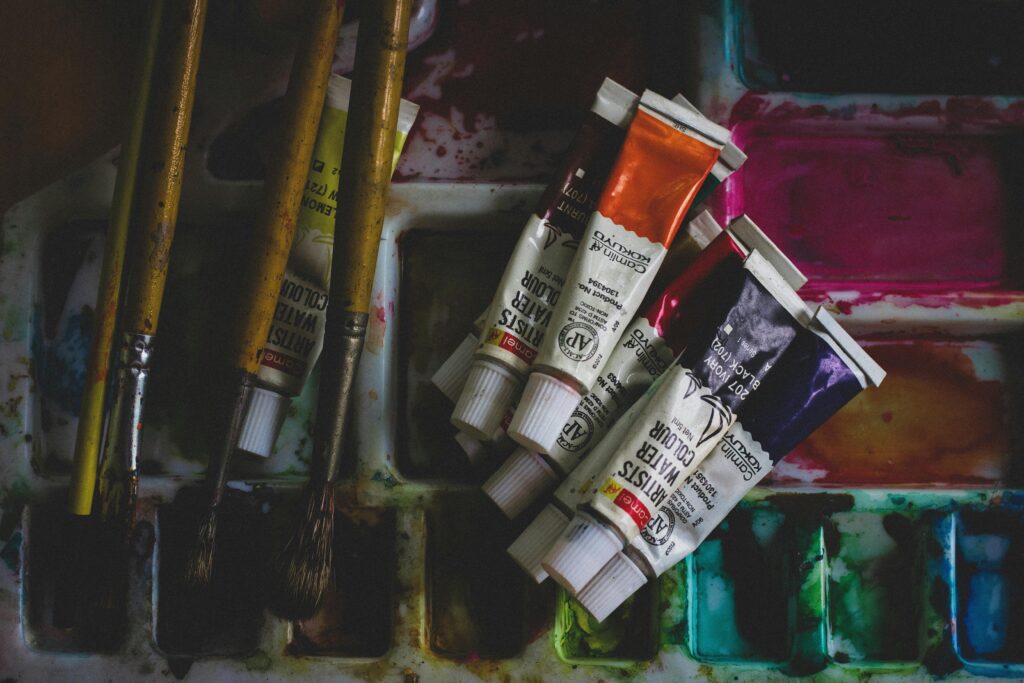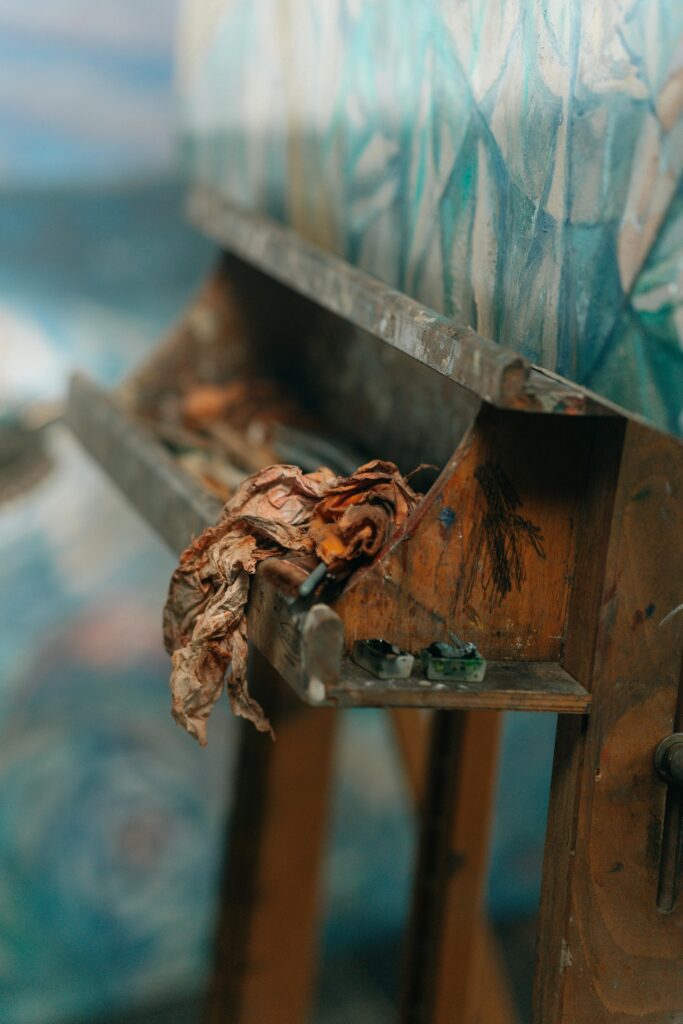6 Creative Ways To Present Your Portfolio

Standing in front of a crowd with your artwork can be exciting, but let’s be honest, it’s also a little nerve-wracking. You want people to really “get” what you’ve made, to see the stories, the choices, and the little quirks that make your work yours. That’s where your portfolio becomes your best friend, it’s like a trusty sidekick that helps you tell your story without leaving anyone behind.
A portfolio isn’t just a bunch of images slapped together. Think of it as a guided tour through your art world. Whether you’re chatting in a gallery, at a portfolio review, or even at a casual community event, a well-organized portfolio makes your ideas crystal clear and keeps everyone engaged.
Picking which pieces to show can feel tricky. Not everything in your collection will shine in the same way for every talk. Curating thoughtfully gives your presentation a sense of flow and helps your audience follow your journey without feeling lost or overwhelmed.
Adding a little context to each piece is like giving your audience the inside scoop. Share what inspired you, what techniques you tried, or even little struggles you overcame. Those stories make your work relatable and memorable, and they invite people into your world.
A bit of practice goes a long way.
Walking through what you’ll say with each piece makes you feel confident instead of flustered. You might even notice some sections that need a tweak, a different order, or just a smoother transition to keep the audience hooked.
And remember your audience, they’re not all artists, and they’re not all gallery pros. Tailoring your portfolio and your talking points to who’s listening makes your presentation feel personal and lively. The right approach ensures your work leaves a lasting impression and keeps people talking about it long after you’ve finished.

Your Portfolio Is More Than a Pile of Images
When you think about your portfolio, don’t just see it as a folder or a stack of prints. It’s a storytelling tool. Each piece is a chapter in the narrative of your artistic journey. How you arrange them can take your audience from curiosity to awe, step by step, without them realizing it.
Your portfolio’s layout matters. Group works by theme, technique, or chronological order, whatever makes the story flow smoothly. The goal is for the audience to follow along easily, rather than feel like they’re hopping randomly from one artwork to another.
Consider the “first impression” pieces. Those initial works will set the tone for your talk. Choose pieces that immediately capture attention or spark a question. They act like the opening lines of a story, hooking your audience in.
Think of transitions too. When you move from one piece to the next, use small comments or segues. A little context, why you created it, what you were experimenting with, can make the flow feel natural and effortless.
Avoid overwhelming people with too many works. Quality over quantity always wins. Selecting a focused number of pieces ensures that each gets the attention it deserves, and your audience won’t feel fatigued halfway through.
Finally, keep updating your portfolio. Swap in newer works or stronger pieces as your style evolves. A living, breathing portfolio grows with you and makes every talk feel fresh and relevant.
Picking the Pieces That Speak for You
Not every piece in your collection is talk-worthy, and that’s okay. The key is to select works that truly convey your voice, process, and creativity. Ask yourself: which pieces make me excited to talk about them? Those are the ones to lead with.
Diversity can be powerful. Show a range of techniques, themes, or concepts, but make sure they connect. This variety keeps your audience interested and highlights the breadth of your skills without feeling scattered.
Think about your audience.
Are they fellow artists, gallery staff, or first-time viewers? Different pieces resonate with different people, so adjust your selection based on who will be listening.
Include at least one “conversation starter” piece. Something that invites questions or sparks curiosity. That one work can drive interaction and keep your talk lively instead of feeling like a monologue.
It’s also helpful to have a few backups. Sometimes, a piece you thought would be central doesn’t get the reaction you expected. Having alternatives ready keeps you flexible and confident.
Remember, it’s your story. Your portfolio isn’t a museum catalog, it’s a narrative that reflects you. Choose pieces that let your personality, experimentation, and growth shine through naturally.
Organizing for Flow and Impact
How you arrange your portfolio is almost as important as what’s in it. Think of it like building a playlist, start with an attention-grabber, have peaks and softer moments, and end on a memorable note.
Chronological order works well for showing growth, but thematic grouping can tell a stronger story. Decide which structure helps your audience connect the dots more easily.
Use spacing wisely. Don’t cram pieces together, give each work room to breathe. This makes the visual experience cleaner and allows viewers to focus without feeling overwhelmed.
Include variety in size, medium, or style to keep energy levels high. Alternating textures, tones, or techniques creates a rhythm that’s more engaging than repeating similar works back-to-back.
Transitions matter. A short, casual comment on the piece you’re moving from can prepare your audience for the next. These little bridges keep the talk flowing naturally and prevent awkward silences.
Finally, test it out. Lay your portfolio out and walk through it like you’re speaking to someone for the first time. Notice where your story falters or jumps around and adjust until it feels smooth and compelling.

Using Your Portfolio as a Speaking Tool
Your portfolio isn’t just a prop, it’s your co-presenter. Each piece can cue what you’ll say next, guide audience attention, and help structure your narrative.
Practice talking about each piece. What inspired it? What challenges did you face? What do you want people to notice? Having a few key points ready keeps your words focused and natural.
Use your hands and gestures to draw attention, but don’t overdo it. Pointing to details can help explain your process or highlight textures and techniques in a way words alone can’t.
Avoid reading from notes. Your portfolio itself should guide your talk. Flip to the next piece and speak naturally about it. Your audience will respond better to conversation than to a recited script.
Be ready for questions. People might want to know why you chose a certain color, material, or style. Having your portfolio pieces organized helps you answer quickly and visually.
Lastly, remember pace. Spend time on each piece, but don’t linger too long. Moving at a comfortable rhythm keeps listeners engaged and prevents fatigue.
Adding Context Without Overloading
Each artwork benefits from a bit of context, but too much can weigh down your talk. Balance is key. A few sentences or a short anecdote is often more effective than a long explanation.
Focus on what’s interesting or surprising. Did a material behave differently than expected? Did an experiment fail before succeeding? Small stories keep the audience curious and invested.
Avoid jargon. Not everyone knows technical terms, and too much insider language can alienate listeners. Use clear, relatable words that convey your ideas without losing depth.
Connect each piece to your bigger artistic vision. How does it fit into your style, experimentation, or personal growth? Context helps the audience see the bigger picture and not just isolated works.
Encourage questions. Sometimes letting the audience ask something about a piece brings up a story you wouldn’t have mentioned otherwise. Interaction keeps the talk dynamic.
Finally, end each piece with a small takeaway. Even a single sentence about what the piece taught you or why it’s important leaves a lasting impression and keeps the narrative cohesive.
Practicing Makes Perfect (Almost)
Even the most seasoned artists benefit from rehearsal. Walk through your portfolio out loud a few times. It doesn’t need to be perfect; it’s about comfort and confidence.
Record yourself if you can. Listening later highlights areas where you rush, mumble, or go off-track. Adjusting early prevents awkward moments during the actual talk.

Practice transitions between pieces. Smooth segues make the talk feel effortless. Know when to pause, when to explain, and when to let the artwork speak for itself.
Time your presentation. A few timed runs help you avoid rushing at the end or dragging the beginning. It also gives you a feel for how much detail to include for each piece.
Try presenting to a friend or family member. Their feedback is invaluable. They’ll point out what’s engaging, confusing, or unclear, things you might overlook alone.
Finally, embrace imperfection. Audience members want authenticity more than flawless delivery. Practicing builds confidence, but staying relaxed and approachable makes your talk memorable and enjoyable.
If you’re getting your portfolio ready and practising your artist talks, why not take it a step further and actually submit your work for recognition? The Woman Artist Award – 5th Edition is a fantastic opportunity to showcase your art to a broader audience, get professional feedback, and gain valuable exposure. Additionally, there’s a cash prize of $1,000 for the winning artist, making it not only rewarding creatively but also financially. Participating provides a real-world opportunity to see how your portfolio resonates and helps build confidence in presenting your work. It’s the perfect next step for turning all that preparation into something meaningful and tangible.
Designing Your Portfolio for Maximum Impact
Your portfolio’s design is the first thing people notice, even before you speak. Choosing how to present images, digitally or physically, affects how your work is perceived. Think about size, spacing, and flow. A clean layout makes your pieces stand out, while cluttered pages can distract from even your strongest work.
Digital portfolios need attention to resolution and device compatibility. Images should be clear, colors accurate, and navigation intuitive. If your audience struggles to see details or flips pages awkwardly, your presentation loses momentum.
For physical portfolios, material matters. Sturdy pages, protective covers, and smooth paper enhance the tactile experience. The audience feels that your work is valued and treated with care, and it subtly boosts your credibility.
Consider adding small visual cues. A subtle numbering system, consistent font choices, or minimal graphic accents can guide the viewer’s eye without stealing focus from your art. Consistency creates a professional, cohesive feel.
Think about the opening and closing pages carefully. The first piece sets the tone, and the last should linger in memory. Ending with a visually or emotionally striking work ensures your audience remembers the talk long after it’s over.
Finally, review your portfolio as if you were an outsider. Step back, scroll through, or flip pages. Notice what grabs attention and what feels confusing. Adjust accordingly so your portfolio feels intentional and polished, not thrown together.
Engaging Storytelling Through Your Pieces
Your portfolio isn’t a silent slideshow; it’s the backbone of your narrative. Each piece should carry a story that connects with the audience, creating emotional resonance. Think about the journey behind each work, not just the final image.
Begin by framing context for each piece. Where did the idea come from? What problem or emotion were you exploring? Audiences remember stories far better than isolated visuals. Personal anecdotes make your talk memorable and relatable.
Highlight your process. Showing progression, sketches, or experiments reveals your thinking and invites the audience into your world. It turns your portfolio into a visual conversation rather than a static display.
Consider challenges you faced while creating. Maybe a medium didn’t behave as expected or a concept took multiple iterations to resolve. Sharing struggles humanizes your art and inspires the audience.
Use storytelling to connect pieces. Tie one work to the next through themes, colors, or concepts. A portfolio that flows like a narrative keeps attention high and encourages curiosity for what comes next.
Finally, leave room for questions and curiosity. Don’t over-explain everything. Let viewers fill in some gaps, ponder techniques, or ask questions. Engagement naturally arises when your portfolio encourages dialogue.
Interactive Techniques to Keep Attention
An artist talk isn’t a lecture, it’s a conversation. Interactive techniques help keep attention and make your portfolio more than just a passive display. Small gestures and questions invite the audience in.
Ask rhetorical questions as you present a piece. “What do you notice first here?” or “Have you seen textures like this before?” These questions prime the audience to observe intentionally, turning passive viewing into active engagement.

Invite comparisons. Show a process image next to the finished work or contrast two approaches to the same subject. This sparks curiosity and encourages people to think critically, rather than just look.
Use your hands and movement to highlight key details. Point to brushwork, shading, or materials without overdoing it. Subtle gestures guide the eye while reinforcing your talking points.
Encourage small interactions. A nod, a question, or even a brief poll of which piece resonates most creates energy. The more involved the audience feels, the more memorable your talk becomes.
Finally, adapt on the fly. Watch reactions, notice puzzled expressions, and adjust explanations accordingly. An interactive approach makes your portfolio talk dynamic, responsive, and engaging rather than static.
If you really want your portfolio and artist talk to leave a lasting impression, having a polished resume is a game-changer. The Artist-Professional Resume Template from Arts to Hearts Project makes it easy to showcase your exhibitions, achievements, and artistic journey in a clean, professional format. It’s fully customizable, so you can match it to your personal style without stressing over design details. With this template, your audience, whether it’s gallery staff, clients, or fellow artists, can instantly see your experience and expertise, giving your talk that extra layer of credibility. It’s a simple tool that elevates your presentation and helps your work shine even brighter.
Final Prep and Presentation Confidence
Preparation is the secret ingredient to confident portfolio talks. Beyond organizing works, practice your delivery, timing, and audience interaction. Familiarity breeds comfort, which translates into natural charm and presence.
Run through your talk multiple times. Record yourself, practice in front of a mirror, or invite a friend. Notice pacing, volume, and clarity. Observing your own presentation allows you to identify weak spots and smooth transitions.
Time each segment. Know how long to spend on each piece so the talk flows without dragging or feeling rushed. A structured timeline reduces anxiety and helps maintain audience attention throughout.
Consider logistics too. Check lighting, seating, and visibility. Ensure your audience can see every detail, whether you’re using a physical portfolio, tablet, or slideshow. Small adjustments make a huge difference in perception.
Dress comfortably but appropriately. Your appearance shouldn’t distract from the portfolio but should reflect professionalism. Feeling good in what you wear boosts confidence and comfort on stage.
Finally, breathe and embrace imperfection. Audiences respond to authenticity more than flawless delivery. A relaxed, approachable demeanor combined with a well-prepared portfolio leaves a lasting impression and makes your work shine.
